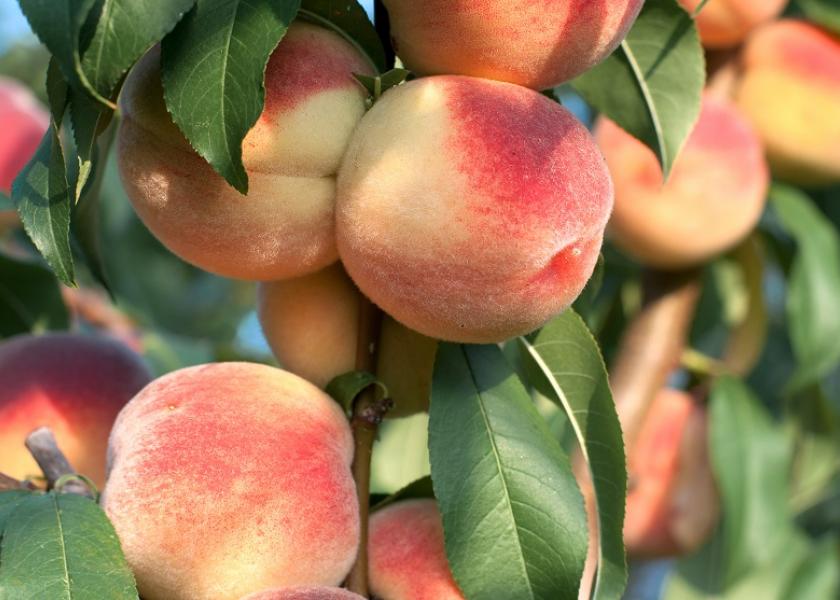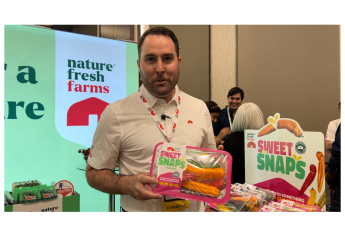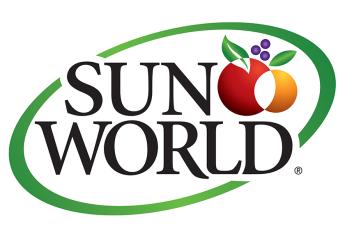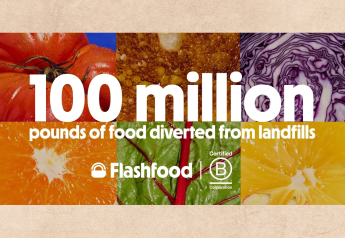Carolina growers cope with inflation squeeze

Vegetable and fruit growers in the Carolinas aren’t having any trouble selling their produce, says Kevin Hardison, marketing representative for the North Carolina Department of Agriculture and liaison with the North Carolina Vegetable Growers Association.
The hard part is putting all the pieces together to produce and ship the crops.
Issues such as rising fertilizer prices, tight labor markets, soaring fuel prices and a shortage of truckers are grabbing the attention of growers, he said.
“There is inflation for all inputs in agriculture,” Hardison said, noting he has heard as much as a 300% increase in fertilizer cost compared with a year ago.
Hardison believes that acreage could remain fairly steady compared with a year ago, with larger growers seeking to pass along cost increases as much as possible.
Some new growers may delay their entry into farming this year because of higher input costs, he said.
Organic produce is a well-established niche in the state, but Hardison said local origin is even more important to the state’s consumers.
Especially since the start of the pandemic, local has been a big draw.
“You have had an explosion of interest in people buying from somebody they know from down the road, and that is carrying over even to this day,” he said. “Retailers are very, very interested in purchasing from local producers.”
The state is also well served by farmers markets, with more than 200 in the state, Hardison said.
The bulk of commercial vegetable production comes from Interstate 95 and east, but Hardison said there are pockets of growers in the Piedmont and western North Carolina areas. Growers in the eastern part of the state have larger acreages, with smaller acreages but more numerous growers in the western part of the state.
Growers are leaning on the H-2A guest worker program to help harvest their crops, he said.
“It seems like the harvest is plentiful, but the laborers are few, literally,” he said. “A lot of these growers are looking for more labor, and the labor that they have with the H-2A program pretty much fits the bill, even with H-2A costs increasing,” he said. “Every aspect from the time the seed goes into the ground to the fruit of the vine, they are needing labor.”
South Carolina
Peach season in South Carolina is starting to kick off now, Ginny Gohagan, marketing program specialist for the South Carolina Department of Agriculture, said on May 10.
“After the freeze event we had in March, volume in May is expected to be a little lighter than normal,” she said. “We should be back up to normal production volume in June and throughout the rest of the summer and into the end of the season in September. “
Gohagan said South Carolina watermelon season will be kicking off after Memorial Day Weekend, with expectations of a good season for growers and consumers. “The season will run until about August, meaning (there will be) fresh South Carolina melons for all of summer and the summer holidays,” she said.
Selected commodity highlights, as reported by the USDA
- North Carolina’s combined processing and fresh market cucumber acreage in 2021 totaled 10,100 acres, of which the fresh market value was $9.8 million and the processing value was $19.7 million.
- In 2021, western North Carolina cumbers were shipped from June through August, with peak shipments in July. Total fresh cucumber shipments from western North Carolina totaled about 50,000 55-pound cartons. Shipments of cucumbers from all other regions in the state totaled 129,000 55-pound cartons.
- Western North Carolina green bell pepper shipments in 2021 were reported from July through October a year ago, with top volume in July and August. Total shipments from the region reached about 148,000 28-pound cartons.
- Shipments of green bell peppers from other growing regions in North Carolina totaled 687,000 28-pound cartons. 2021 shipments of “turning red” bell peppers were 76,000 cartons, while North Carolina jalapeno pepper shipments, active in July and August, totaled nearly 90,000 cartons last year.
- North Carolina zucchini shipments were active from May through October last year, with peak shipments in June. Total zucchini shipments were 58,000 40-pound cartons.
- North Carolina eggplant volume was active in June and July last year, with total shipments of 40,000 33-pound cartons.
- In 2021, North Carolina greens were shipped from January to February and then again from May through December. Peak volumes were in November and December, with total 2021 shipments at 488,000 25-pound cartons.
- North Carolina tomato shipments were active from July through October, with peak volume in August. Total 2021 North Carolina tomato shipments shipped in 25-pound cartons totaled 102,000 cartons.
- North Carolina/South Carolina cantaloupe volumes were shipped from June through September a year ago, with peak volumes in July and August. In 2021, about 270,000 40-pound cartons of cantaloupes moved from the two states.
- North Carolina round green bean shipments were active from May through July in 2021, with peak volume in June. In 2021, North Carolina shipped about 170,000 30-pound cartons of round green beans.
- Western North Carolina apple shipments began in March and can run into January last year, with peak shipments in the 2021 season during September and October. Total shipments in 2021 were about 85,000 40-pound cartons.
- North Carolina blackberry shipments were active from May through October in 2021, with peak shipments in June and July. 2021 shipments from the state totaled 864,000 5-pound cartons.
- North Carolina blueberry shipments were active from May through July last year, with peak volume in June. Total 2021 shipments of conventional North Carolina blueberries were 1.85 million 9-pound cartons, with organic volume of blueberries rated at near 40,000 9-pound cartons.
- North Carolina strawberries were active from April through June in 2021, with shipments peaking in April and May. During the 2021 season, growers shipped about 373,000 12-pound containers of strawberries.
- North Carolina broccoli shipments were active from October through December a year ago, with peak volume in November. Total 2021 shipments were 113,000 23-pound cartons.
- North Carolina round green cabbage shipments were active from May through December last year, with peak volume in June and again in November. Total 2021 shipments, were 590,000 50-pound cartons.
- North Carolina red cabbage shipments were active from May through December in 2021, with peak shipments in June and November. Total shipments of red cabbage were 24,000 50-pound cartons.
- North Carolina savoy cabbage harvest was active from May through December a year ago, with peak volume in June. Total shipments were 8,000 50-pound cartons.
- South Carolina yellow flesh peaches began in May last year and continued through September. Shipments peaked in June and July, and total shipments of 4.37 million 25-pound cartons in 2021.
- South Carolina (Charleston-Beaufort district) mature green tomatoes shipped in 25-pound cartons were active from June to July in 2021, with peak volume in June. Volume in 2021 was 731,000 cartons.
- South Carolina collard greens were active all year in 2021, with peak volume in November and December. Total 2021 shipments were 1.8 million 25-pound cartons.
- South Carolina kale greens are shipped year-round, with peak volume from January through April. Total 2021 shipments were 708,000 25-pound cartons.
- South Carolina mustard greens are active from January through December, with top volume in January and February last year. 2021 mustard green shipments from the state were 276,000 25-pound cartons.
- South Carolina turnip top greens were active year-round a year ago, with 2021 shipments reported at 372,000 25-pound cartons.
- South Carolina green onions were active year-round last year. Total 2021 shipments from the state were 1.38 million 13-pound cartons.
- South Carolina zucchini squash shipments were active from May through October in 2021, with peak shipments noted in July. Total 2021 shipments were 50,000 40-pound cartons.
- South Carolina yellow crookneck squash shipments were active from June through October a year ago, with peak shipments in July. 2021 shipments totaled 48,000 40-pound cartons.







